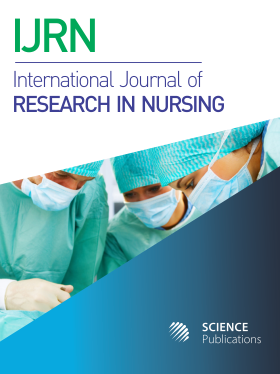An Effect of the World Health Organization's "My Five Moments for Hand Hygiene": An Initiative on Hand-Hygiene Knowledge, Beliefs, Attitudes and Compliance Among Certified Nursing Assistants Working in A Health Care Facility
- 1 Public Health, CE Turkett Consultants, United States
Abstract
According to the CDC, an estimated four million Americans reside in long-term care facilities in the United States, among which one to three million life-threatening infections occur every year. These infections at long-term care facilities are a major cause of hospitalizations and death. The purpose of this research project was to provide a nonrandomized pretest/posttest on knowledge, belief, attitudes and compliance to all 45 CNAs selected for this study to improve current hand hygiene practices of certified nursing assistants employed by a health care facility. Pre-test and posttest assessments were in addition to an intervention approach administered after the pretest and before the posttest. The World Health Organization Hand Hygiene Knowledge Questionnaire for Health Care Workers, the Hand Washing Self-Assessment Inventory Scale Questionnaire for belief and attitude and a wall hand sanitizer as a proxy to measure hand compliance were the instruments. The intervention administered was the WHO's "My Five Moments for Hand Hygiene" approach to improve hand hygiene practice and compliance. The participants included 30 CNAs selected as the intervention group and 15 CNAs as the control group. The results indicated that the mean difference 0.14, 95% CI [0.05-0.23) in Knowledge between the treatment and control groups was significant (p = 0.004). The results of the 2 by 2 factorial ANOVA conducted to determine Belief and Attitude indicated a significant main effect (F1, 43) = 30.55, p<0.001, pη2 = 0.42). The analysis for Attitude indicated a significant main effect (F1, 43) = 29.37, p<0.001, pη2 = 0.42). For the hand sanitizer measurement, there was no significant difference in hand sanitizer use between control and intervention floors at baseline (p = 0.175). After the intervention training, the intervention floors had significantly more hand sanitizer use than the control floors (p = 0.033).
DOI: https://doi.org/10.3844/ijrnsp.2020.24.32

- 18,277 Views
- 3,641 Downloads
- 1 Citations
Download
Keywords
- Accountability
- Buddy System
- Certified Nurse Assistants
- Compliance
- Hand Hygiene
- Infection
- Microorganism
- Morbidity
- Mortality
